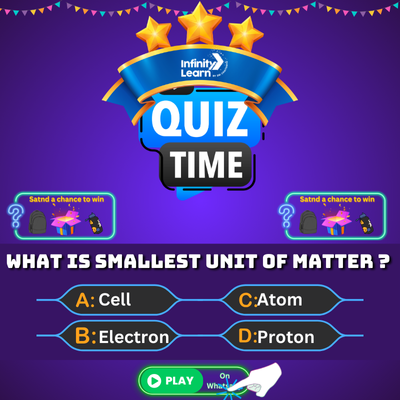Table of Contents
When it comes to nutrition and health, understanding the term RDA is crucial. The full form of RDA is Recommended Dietary Allowance. It refers to the average daily level of essential nutrients that are sufficient to meet the nutritional needs of most healthy individuals. Established by nutrition and health authorities, RDA helps guide people toward healthy eating habits and balanced nutrition. In this article, you will learn what RDA means, why it is important, how it varies across age groups, and how it impacts your overall health.
What is RDA (Recommended Dietary Allowance)?
RDA is a scientific term used in nutrition guidelines. It represents the amount of vitamins, minerals, proteins, carbohydrates, and other nutrients a person should consume daily to stay healthy and prevent nutritional deficiencies. The goal of RDA is to ensure that individuals receive enough nutrients to maintain good health, growth, and bodily functions.
RDA is designed for healthy individuals and varies based on age, gender, and life stages, such as pregnancy or old age.
Importance of RDA in Daily Nutrition
Knowing the RDA of nutrients can help you:
- Plan a balanced diet by knowing how much of each nutrient your body requires.
- Avoid deficiencies that can lead to diseases like anaemia, osteoporosis, or scurvy.
- Prevent overconsumption, which may lead to toxicity or health complications (for example, excessive Vitamin A can harm the liver).
- Promote healthy growth in children and support good health in adults.
Dieticians and healthcare professionals use RDA guidelines to design personalized diet charts and nutrition plans for individuals.
Do Check: List of all Important Full Forms
RDA Guidelines for Different Age Groups
- Children: Children need specific amounts of nutrients to support growth, bone development, and immunity. Their RDA levels are carefully adjusted based on age groups, such as infants (0-1 year), toddlers (1-3 years), and older children (4-12 years).
- Adults: Adults require adequate macronutrients (carbohydrates, proteins, fats) along with micronutrients (vitamins and minerals) to maintain energy levels, muscle strength, and overall health.
- Pregnant and Lactating Women: Expecting mothers have higher RDA requirements, especially for iron, calcium, folic acid, and protein, to ensure healthy fetal development and maternal well-being.
- Elderly Individuals: Older adults need adequate vitamin D, calcium, and fiber to maintain bone health, digestive function, and prevent age-related deficiencies.
Who Decides the RDA Guidelines?
- In India, the Indian Council of Medical Research (ICMR) sets the RDA values.
- In the United States, the Food and Nutrition Board of the National Academy of Sciences establishes RDA.
- The World Health Organization (WHO) also provides global nutritional standards.
These values are based on scientific studies and are regularly updated to reflect modern health needs.
RDA vs Daily Value (DV) vs Reference Intake (RI)
- RDA (Recommended Dietary Allowance): The ideal intake of nutrients for most healthy people, calculated based on age and gender.
- Daily Value (DV): Found on food labels, it is a general guide for the public, usually based on a 2000 calorie diet.
- Reference Intake (RI): Commonly used in Europe, it shows how much of a nutrient you should consume daily, very similar to DV.
How to Meet Your RDA Daily
- Eat a balanced diet with a variety of foods – cereals, pulses, vegetables, fruits, dairy, and nuts.
- Include protein sources like eggs, chicken, paneer, and legumes.
- Consume green leafy vegetables and seasonal fruits for iron, vitamins, and minerals.
- Drink sufficient water and follow portion control to avoid overeating.
- Consult a nutritionist or doctor for personalized advice based on your lifestyle, age, and medical conditions.
Read More Articles for Full Form
Conclusion
Understanding the RDA full form and its practical application is essential for maintaining good health and well-being. Following RDA guidelines helps ensure you get the right balance of nutrients every day, reduces the risk of malnutrition, and supports long-term health. Whether you are a student learning about health, or someone aiming to live a healthier life, knowing your Recommended Dietary Allowance (RDA) is a smart step towards better nutrition.
FAQs on RDA Full Form
What is RDA?
RDA stands for Recommended Dietary Allowance. It refers to the average daily amount of nutrients (vitamins, minerals, proteins, etc.) that a healthy individual should consume to meet the body’s nutritional needs and prevent deficiencies.
How to calculate RDA?
RDA is calculated by nutrition experts based on scientific research, considering factors like age, gender, weight, physical activity, and life stages (e.g., pregnancy). For personal use, individuals usually refer to government-provided RDA charts like those from ICMR (India) or FDA (USA) rather than calculating it themselves.
What is RDA full form?
The full form of RDA is Recommended Dietary Allowance. It defines the optimal daily intake of essential nutrients required to maintain good health.
What is RDA in nutrition?
In nutrition, RDA represents the scientifically recommended amount of nutrients a person should consume each day to maintain health, prevent diseases, and ensure proper growth and development.
How much RDA per day?
RDA varies by nutrient, age, gender, and health status. For example: Protein: 55g/day (adult females), 60g/day (adult males) Iron: 17-21mg/day Vitamin C: 80mg/day To know exact amounts, it’s best to refer to official RDA charts like those from ICMR (India) or WHO guidelines.









